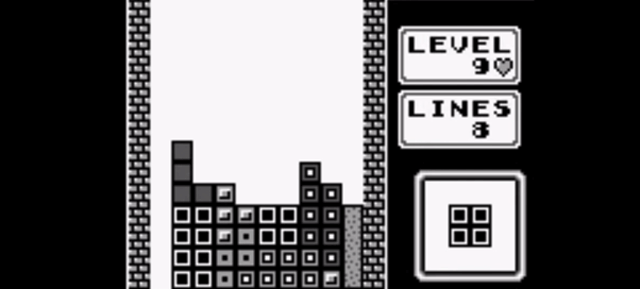Thirty years ago today, Russian computer programmer Alexey Leonidovich Pajitnov created Tetris. Unveiled behind the Iron Curtain, the deceptively simple, maddeningly addictive game soon left the Soviet Union. It lived on dozens of platforms, but its Lennon-McCartney (Lenin-McCartney?) partner was Nintendo’s Game Boy. And the duo defined modern mobile gaming as we know it.
By now, Tetris’s history is well-known among gaming fans: introduced on June 6th, 1984 as a PC game, the product of Moscow’s Academy of Science of the USSR spread to the rest of the world in short order. It was the first video game exported from the Soviet Union to the US, by way of Commodore 64. But it was in 1989, when it was included in the US launch of Nintendo’s Game Boy, that Tetris entered a generation’s psyche.
The Game Boy was neither the first hand-held video game (rudimentary devices began arriving as early as the mid-70s), nor the most powerful: both the Atari Lynx and the Sega Game Gear, released around the same time as the original Game Boy, packed backlit, colour screens. Nintendo didn’t bring colour to the Game Boy until 1998. But where Atari and Sega’s offerings were battery-thirsty powerhouses, Game Boy’s simple features and long gameplay time (up to 12 hours from four AA batteries) made it a favourite among more casual gamers.
And pretty soon, the Game Boy made casual gamers out of tons of people. Sales surpassed one million mere weeks after the Game Boy’s August 1989 US debut. Between the original Game Boy and the Game Boy Colour, nearly 120 million of the handheld devices were sold.
Tetris was one of the five game cartridges that Nintendo chose to include in the box with the first run of Game Boys. It ran on to be the far-and-away best-selling game on the system: more than 30 million cartridges that bear its name made it into loving homes. More importantly, Tetris helped define the kind of mobile gaming that’s still so popular today.
Think about it conceptually: a game you can start from scratch and play for a minute or an hour (or several grinding, increasingly adrenaline-jittered hours). There’s no storyline. The maneuvers are stone simple. You could hand it to someone who’s never played a video game in their entire life, and they’d be able to figure it out within minutes.
My grandmother was one of those people. She was born in 1930, and had zero interest in video games. But as a kid in the early ’90s, when I’d wake up on Saturday mornings, I’d find my grey brick Game Boy on the kitchen table, batteries dead again from one of her late-night Tetris marathons. The sheer joy she exhibited at receiving a purple Game Boy Pocket as a birthday gift completely ruined gift giving for me. Nobody will ever be as happy unwrapping something I’ve given them. And I know it’s not just me. Everyone has a “non-gamer who fell in love with Tetris” story.
Mobile gaming has come a long, long way since Tetris and Game Boy started giving people thumb-blisters and nightmares about continuously-falling bricks. Today, you can play astonishingly realistic first-person zombie shooters on a full-colour touchscreen device that fits in your pocket and carries the whole gosh-danged internet on it.
But the most popular mobile games are still the ones that fit the Tetris mould: Maddeningly un-beatable.
Maybe you and your tech-savvy friends probably play all kinds of convoluted, plot-driven games on your handheld devices. But the people around your dinner table, or on your subway car, or next to you at the office or airport, are probably consumed by some sort of angry or flappy bird game, one that in a very real way owes its design and existence to the Game Boy and Tetris.
So here’s to you, Alexey Leonidovich. You may have had to wait until 1996 to start making money from your creation, but we’re still playing, riffing on, and rhapsodizing your beautiful masterpiece today.
